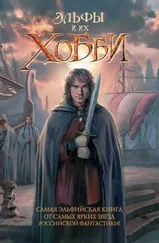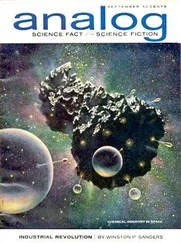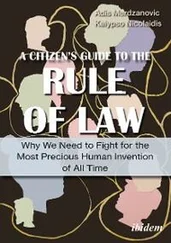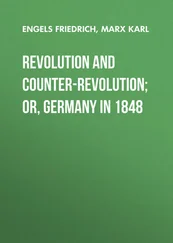Hitler sent his bodyguards to take the police HQ, but when the leader pounded on the door they were politely but firmly turned away. Instead of attacking the HQ, he decided to check in with the putsch hall. Goering told him to come back — there had been a change in plan. The founding members of the group that was to kill and terrorize millions had packed up their machine guns and meekly marched back to the beer hall, where Hitler had found time in his schedule to fit in an interview. They found him holding his first international press conference with reporters from the New York Times and other American newspapers.
Back to Goering. After getting the um-pah band together and needing something more to do, he took the city council hostage and made sure the good citizens of Munich were flying the Nazi flag. But the state police were finally posting themselves on the bridges separating eastern Munich from the western part. It was almost noon, and except for Goering’s energetic hostage taking, nothing much was happening. Hitler and Ludendorff realized something had to be done or the putsch would fail. Reports came in that police and army reinforcements had moved out in force to surround Röhm and the flag-clutching Himmler, who were both still holed up at the war ministry where Hitler and Ludendorff had forgotten them.
Ludendorff knew they must immediately attack or retreat. Retreat to the hills was rejected. Hitler wanted to wait until they got an answer from the deposed crown prince, but their messenger was still on the train. Ludendorff chose neither and oddly decided to march peacefully from the beer hall to the center of town in a triumphant procession to try to sway the populace to their side, and presumably lead on to Berlin. Hitler didn’t like the idea, most likely because it wasn’t his, but Ludendorff, wearing his revolutionary tweed cap instead of his spiked Pickelhaube, commanded “we march.” Swept up in revolutionary fervor he blithely abandoned the most basic of infantry tactics, such as attacking your enemy.
Not even Hitler could hold back the bullheaded general when he finally worked up a full head of steam. The band, still unpaid, packed up its instruments and went home. Ludendorff, the Great War hero, Hitler, the ingénue, and his retinue of thousands of desperate soldiers of fortune would have to march to victory unaccompanied by music. Hitler, Ludendorff, and Goering fronted a column and marched from the putsch hall toward the center of town a few hundred yards away. After presumably declining to take another route when asked by the police, the bridge into downtown Munich was stormed by Hitler’s bodyguards who easily pushed aside the police troopers gamely blocking their way. The march moved on.
The morning papers and the posters had done their job: the populace was turning out to cheer them on. At every corner they seemed to be gaining strength. It was the glorious first morning of the Nazi revolution. The confusion of the night before was vanishing in the festive morning air. In the Marienplatz, about a mile west of the river, they came to another line of state police but this time veered around them and kept marching. Singing broke out. Hitler, Ludendorff and the others linked arms. It was just how they dreamed it would be.
Then they turned another corner and confronted a line of police at the entrance to the Odeonplatz, in the heart of Munich. The marchers pushed the police back into the square. The police stiffened. A shot rang out. Hitler’s reliably brutal bodyguards attacked with drawn bayonets. More shots rang out as the crowd scattered.
The shooting lasted for almost a minute. The volley of police gunfire had devastated the column, scattering the marchers, except for the implacable Ludendorff, gloriously and stubbornly out of touch now with even his own immediate environment. He picked himself up off the street, stepped over the dead and wounded, and marched straight through the police lines into captivity.
The man marching next to Hitler was shot dead while Hitler’s bodyguard, a beefy ex-wrestler named Ulrich Graf, yanked Hitler to the ground and took eight bullets in order to shield the future murderer of millions from death. Hitler suffered a badly strained shoulder before fleeing in a waiting car. Goering, hit badly in the groin, crawled into a nearby house where he was patched up by the wife of a Jewish businessman and her sister, and then smuggled into Austria. (Goering later helped the sisters escape Germany on the eve of World War II.)
Enough of the putschers managed to return fire to kill four state policemen. The rest of them fled like rats, leaving fourteen of their putschmates dead in the street.
The putsch was over, ending ignominiously less than a day after it started.
Hitler fled to a farmhouse outside the city, where he was rounded up a couple days later like a common criminal. Goering’s wound at the Odeonplatz led him to a morphine addiction that would plague him to the end of his life. Himmler and his pet flag, along with most of the putschists’ troops, were allowed to march out the back door of the War Ministry by sympathetic troops when Röhm surrendered. Röhm was cashiered from the army, sent to prison, and then sailed to Bolivia as a military consultant to its fascist-leaning government.
Ulrich Graf, the bodyguard who saved Hitler’s life, was dropped from Hitler’s inner circle after he got out of prison.
The whole affair was soft-pedaled by the courts, and Hitler and his coterie were given ten months easy time in Landesberg prison, a cushy castle, where the putative dictator used the time to finally jot down his thoughts about taking over the world in a book titled Mein Kampf .
Hitler and his gang finally gained widespread success by using their vile messages to seduce the one power in Germany that could free them to do their evil bidding: the German army high command.
EIGHT.
THE CHACO WAR: 1932
Some countries have never won a war. You might say they inhabit the losers’ bracket of history. To them the way out of that bracket is to beat somebody. Anybody. But what they don’t understand is beating another loser won’t put them in the winners’ bracket; it’ll just elevate them in the losers’ bracket.
Two members of the losers’ bracket are Paraguay and Bolivia. Paraguay had fought the disastrous War of the Triple Alliance, while Bolivia suffered a huge defeat during the War of the Pacific, leaving both countries poor and landlocked. Gradually it occurred to them that the only path to the winner’s circle of history lay in beating the other. For decades they circled each other and prepared, which in their military traditions meant barely prepared. In 1932 neither was even close to battle-ready, but it seemed as if history itself had doomed them to fight. It became the bloodiest fight of the century in North and South America.
In the end nothing was gained or lost, except for a lot of lives and treasure.
Marshal José Félix Estigarribia— smart and calm, Estigarribia quickly rose through the officer ranks to lead the Paraguayan troops. As preparation to commanding Paraguay’s army he spent three years in France and graduated from the French army’s Staff College the year after Charles de Gaulle.
Skinny — As a young man he was recognized as an outstanding officer and sent to Chile for additional training with its professional army.
Props — His victories gained more worthless territory for Paraguay than any other military leader in its history.
Pros — Despite years of French military training, he managed to win a few battles for his country.
Читать дальше












